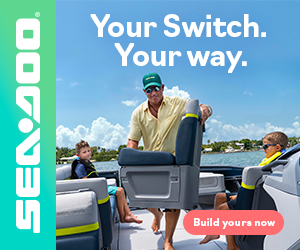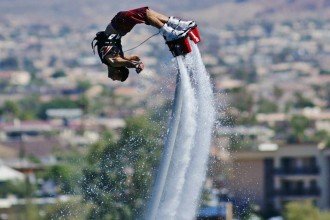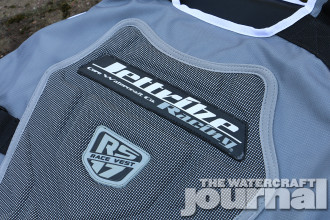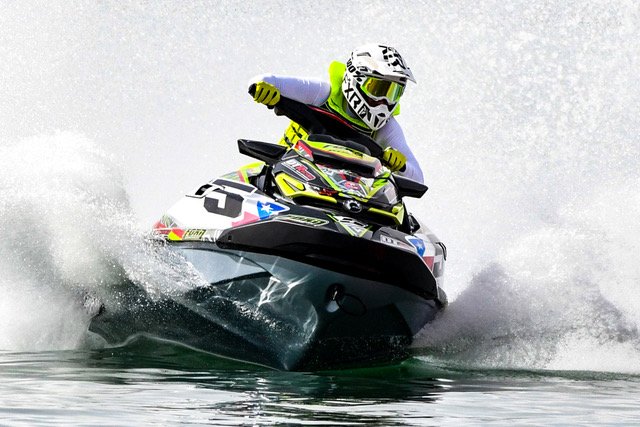
For 20 years, the Mark Hahn Memorial 300 has brought some of the biggest names in PWC racing to Havasu. They come for the challenge; they come out of respect for, and in memory of, Mark Hahn; they come for bragging rights and brother (and sister) hood. Some drive hundreds of miles, others fly thousands. And there are very few races that are spoken of with the affection and enthusiasm as this race that is often seen as the flip side of the Havasu race coin – playing opposite to the IJSBA World Finals.
And it could be said that endurance racing is seen as the bailiwick of the young. After all, the strength, stamina and energy, not to mention physical conditioning, that is required by the 300-mile benchmark would seem to favor the young. But that’s not always the case; some of PWC racing’s legends have taken home Hahn hardware, and those lined up on the start line – and the podium – often span decades.
Case in point: Two months ago, when Mike Maniscalichi and Jon Ford, with a Dean’s Team tuned Sea-Doo, not only topped their class, but staked claim to the champion title with a record-setting time of 4 hrs, 9 min & 29 seconds.
The Watercraft Journal recently had the opportunity to get Manischallichi’s take on the race and the win.
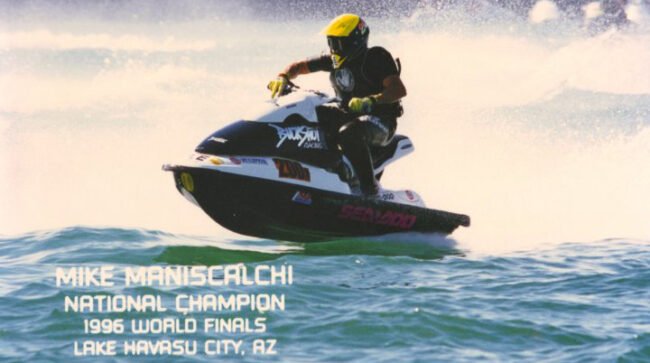
The Watercraft Journal: Michael, you recently brought home some impressive hardware from the 2024 Mark Hahn Memorial Havasu 300, not only acing the R/A Vet Masters Open division, but claiming the overall win and walking away Mark Hahn Champion. Could you please begin by introducing yourself to those readers who do not know you, and tell us about your decision to race the Mark Hahn 300 this year.
Michael Maniscalchi: Certainly, I’m 58 years old and co-own a Commercial Real Estate Company with my brother here in Southern California. I’m fortunate to be able to fulfill my racing goals and have a business partner that is supportive of that. I remain very active by cycling (Mountain Bike, Gravel and Road riding) 300-400 miles per month. Been a racer most of my life between motocross, watercraft and mountain bikes. I’ve always owned Jet Skis and used them as a form of summer cross training when I was racing Motocross.
In 1994 I started racing watercraft and qualified for World Finals my first year of racing and in 1996 won an IJSBA National Championship in the Sport class. In 1997, I moved over to the watercraft endurance racing side of the sport and raced the expert class with much success. I turned pro in 1998 and won a number of notable races and series in the pro runabout open, long course and grand prix classes as well as the Pro-Am Sport class.

WCJ: How did you team up with Jon Ford? What is your race history together, if any?
MM: I met and competed against both Jon and his wife Robin from 1996 through 2000 while endurance racing. Both of them were accomplished, professional racers and fierce competitors. They moved from California to Texas to start a family, but we always kept in touch through social media.
Ironically, we all used to race with Mark Hahn and what an honor it is to win this race on the 20th anniversary of its running. He was a good man and made a big impact on everyone he came in contact with.
I know Jon had raced the 300 before and finished second once. I, too, was away from the sport raising a family and this was one race I had not had the pleasure of doing. Jon reached out to me in early January by sending the race flyer photo in instant messenger with the question “Would you be interested in racing this with me?”

I have a ton of respect for Jon as not only a racer, but a friend. In true racer fashion I responded with “What boat? What modifications are done to it? What is the top speed? Has it been tested for a 5 hour race?
Knowing Jon and how serious he is about winning and him knowing I’m cut from that same cloth, he and I were motivated to win. He picked up 2 new 2024 Sea Doo’s and was coming into this with a full effort. He was candid and said “I know you’re in shape. I see all of your training and racing on Facebook.” I knew Jon would be prepared so I did the same and showed up ready to win.
WCJ: What went into the decision to race the 2024 Sea Doo RXT-X, and what part did that play in your and Jon’s success this year?
MM: Jon made available to us two identically prepared Ford Brother’s Racing/Team Dean’s 2024 Sea Doo RXP-X and RXT-X crafts. We were hoping and expecting the race to get rough, so we opted for the RXT-X. Jon is an exceptional rough water racer and very efficient on the boat and I’ve got plenty of rough water races under my belt so we were hoping for wind. That did not happen so we had a relatively flat water race for at least the first half. We were 3-4 miles per hour off the Yamahas in the flat water and came around in P-10 after the first lap. That did not rattle us as we knew the day was going to be long and not won in the first hour.
Where we had an advantage was in the first fuel stop, all the Yamahas came in for fuel at lap 4 and we stayed out and did not pit until lap 5. That moved us from P-10 to P-4 after the first 50 miles. Our pit crew, who were simply incredible, fitted our craft with GPS units so we were able to track our lap times with pinpoint accuracy.
Jon and I were within 1-3 seconds of each other every lap, so we knew it was on. At that point, we were just clicking off laps and getting in and out of the pits as quickly as we could. While the race looked completely flat from the shore, it would chop up and have some rollers between turns one and four. That is where the RXT-X began to shine.
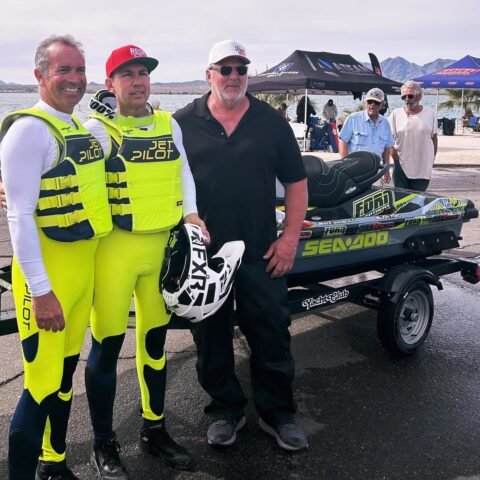
WCJ: What was it like to work with Dean Charrier, and how important is that tuning to the performance of a race ski, especially in an endurance race like the Hahn.
MM: This was my first time working with Dean. Obviously, he has a well-respected name in the industry and I have heard his name over the years, but because he was predominantly a Yamaha tuner and I raced Sea Doo’s my entire time racing, we had not crossed paths until the 300.
He built the Ford Brother’s Racing Yamaha’s and they were ridiculously fast. He performed his custom remapping of the ECU’s on our Sea Doo race boats and together with the Ford Brother’s Racing Team, replaced all of the intake and exhaust clamps, added oil catch cans and outside Jet Trim doing the seats and installing custom graphics, our race winning platform was predominantly OEM.
Dean has indicated that he was so impressed with what Sea Doo have done with the 325 engine, he intends to do a lot more work with them. I believe this platform can easily go another 5 miles per hour faster and still be reliable.
WCJ: This year’s race conditions were a bit different than normal. How did the flat water affect the ski, your endurance and the strategy for the race?
MM: The flat water definitely consumes more fuel and we played with the trim in the open water during the race to find the best combination of top speed and forward drive. The fortunate part was no matter what the water conditions were, we were all racing the same course. If we were consuming more fuel, so were the Yamaha’s and the Kawasaki’s. Our attitude was just to put in the time, know where our closest competitors were on the course and grind it out.
Our pit crew included Ford family members and friends, racers, former racers, mechanics and engineers that simply love the electronics and analytical side of the racing. The engineers were housed at a table under a canopy at the shore with GPS units situated in our race boats, multiple laptops tracking lap times, multiple stopwatches on the top 5 boats recording lap times for us and our competitors. We also had our crew driving the mules pulling the boats in and out of the water, the fueling crew. It truly is a team effort and we are grateful to have all of these crew members in this effort.
WCJ: When it came down to the end, and you guys were trailing behind Kawasaki’s Brandon Warner, was there a strategic plan for that last lap, or was it just about pinning it open and going for the pass?
MM: Going into the final 5 laps, we knew it was down to the 21 Kawasaki (Brandon Warner), who was on a 4-stop fuel strategy and our team, which we were on a 5-stop strategy. When we were in the pits fueling and doing the final rider change, we thought we had them covered, but they must have snuck past when we were fueling.
Jon said to me, “Put 4 good laps in and bring this thing home.” When I got going, I laid down the first 2 laps and was going through a fair amount of lappers. When you come up to lap a fellow racer, they will typically look back once or twice then ultimately concede as you pass. As I got closer and began to see the 21 up ahead, he kept looking back. So much so, I thought to myself “He has to be on the lead lap.”
It was starting to chop up between turns 2 and 4 and when I got out into open water, it took me a lot longer to close on him. We now had finished lap 3 and were coming up on finishing lap 4. As we came through the finish line area, I got a little concerned because there was no white flag and I knew I only had 5 laps in this tank of fuel.
I started planning my pass, so we went through turn 1 and I could now clearly see it was him. I closed on him between turns 1 and 2 and continued to get closer by staying in his wake as he was flattening down the first round of chop for me and that was allowing me to close. We got through turn 3 on our way to 4 and now I was beginning to feel some of his spray. I made a run on him right before the turn 4 buoy, jumped out of his wake and got next to him right as we were going through turn 4. I looked over my right shoulder and he was right there. I now knew we had been racing for over 4 hours and it was going to come down to this last mile.
In my mind I was saying “pin it for the next mile and run the 3 yellow buoys so tight there will be no way for him to get under you” and that is exactly what I did. I never looked back at any point through that last mile, just kept it pinned and got through the 3 yellow right hand buoys, then the 2 red left hand buoys, got across the line, glanced over at the flag and the gun went off. Then I knew we had it and threw my fist in the air. Brandon was 2 seconds behind me.
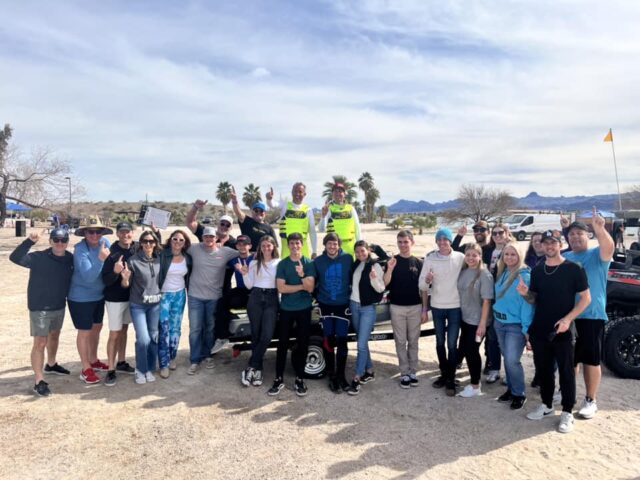
WCJ: To win what can be a 10+hour, 300 mile race, by a mere 2 seconds – there had to have been an overload of adrenaline on that last lap, What was the mental process to keep your head in the game when you were behind, and what was the first thing through your mind when you guys took the lead?
MM: I was most happy for Jon and our crew because I know they have been close to winning this race before and I really wanted to get this win for them.
Next, I was greeted by my 19 year old son, who made the trip with me – which immediately made me tear up. Next, our whole crew came running over and it was unreal. I’ve won a lot of races in my life, but nothing compared to the feeling of winning this race. I kept somewhat reserved, because the Kawasaki Team had thought they won too and were celebrating at the same time as us. I kept asking Jon “Are you sure we won?”. He looked at me and said “We won.”
I never even had time to think once taking the lead. I just wanted to get it to the flag and then see how things were going to shake out. It wasn’t until we loaded everything up, went back to the Ford house, got some food in us, got showered and ready for the awards party and then showed up and saw our name in print as the winners – that’s when the overload of adrenaline set in. From that point for me it was all smiles.
I cannot thank enough, Jon and Robin Ford, Ford Brother’s Racing, Dean’s Team Racing, Allen Lopa Racing, Walt Cadman, Dan Fitzgerald and Jet World Powersports, Andrew Buck, Buckshot Racing and everyone that has helped us over the years. Getting to race is the fun part. All of the people behind the scenes are what really make it happen. My son and I drove back to Southern California that night and while he fell asleep about the halfway point, I was smiling and re-running the whole race over in my head thinking of the ways and places I and we could be better. Racers are always thinking!!!
WCJ: So what’s next for you this season? Will you be racing at all this season? And Do you plan on taking on the Mark Hahn Havasu 300 again in 2025?
MM: Jon asked me if I’d like to come back and defend in 2025 and I said ‘if your son elects to race against you and not team up with you, I will be happy to come out of retirement again and do it.’
I’m currently preparing to build a race RXP-X, as I’ve now been bitten by the bug again. Is there a limit for being too old to race and win on these things? While my fitness was good for this race, going 75-77 miles per hour for three 40 minute motos exposes where you need work. As light as my FXR moto helmet is, my neck was a bit sore from holding that forward at speed and in the chop for that period of time. This has motivated me to be in a better fitness position than I was this year and hope for some seriously rough water. That’s when it gets fun!










